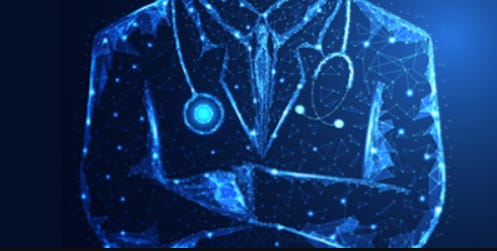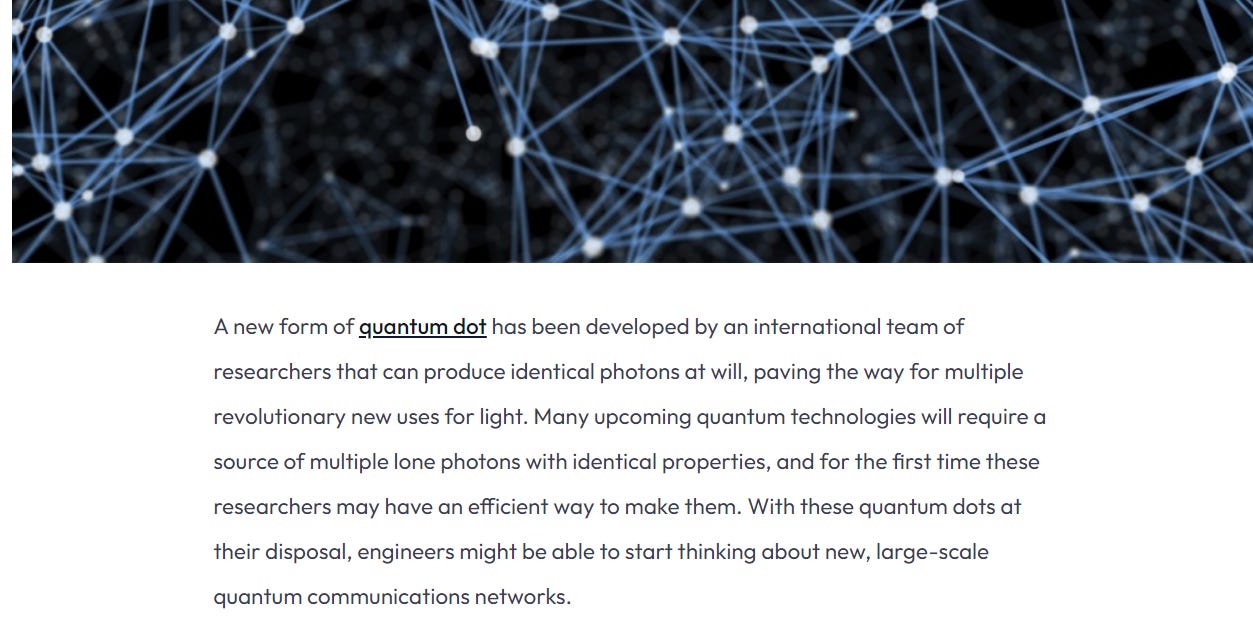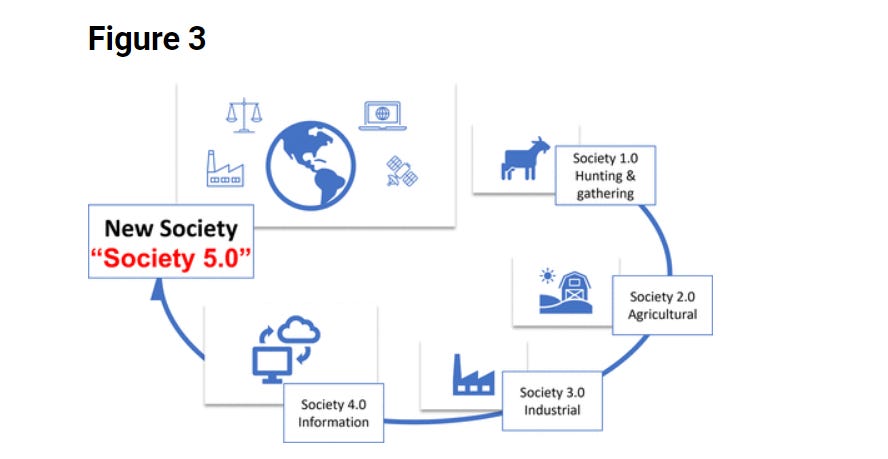QUANTUM DOT DRUGS FROM QUANTUM DOCTORS
DR. PIERRE KORY
https://en.wikipedia.org/wiki/Pierre_Kory
https://augmentednac.com/en/augmented-NAC-testimonials
QUANTUM PHYSICS AGUMENTED NAC?
https://pubs.rsc.org/en/content/articlehtml/2017/ra/c7ra02403g Synthesis and characterization of near-infrared-emitting CdHgTe/CdS/ZnS quantum dots capped by N -acetyl- l -cysteine for in vitro and in vivo imaging ... - RSC Advances (RSC Publishing) DOI:10.1039/C7RA02403G
Fluorescence image of ex vivo heart, liver, spleen, lung, kidney and submandibular lymph node after injected QDs for 6 h
To further study
their potential toxicity in vivo applications,
we performed toxicity measurement for 14 days after QDs injection. The results showed that the programmed NIR QDs caused negligible harmful effects to the nude mice even at the concentration of 20 mg kg−1. Furthermore, the NAC capped QDs accumulated within the tumor cells through passive targeting within 2 h of blood circulation. Unexpectedly, the entered QDs were metabolized through the lymphatic drainage because of their ultra-small sizes and excellent stability. Thus, the QDs have potential applications as fluorescent labels for long-term diagnostics and therapy.
https://www.youtube.com/watch?v=Le715N8uVco Potential Discovery On How To Get Rid Of Spike Protein - YouTube
There are several noninvasive imaging techniques available for molecular imaging purposes, such as fluorescence imaging, computed tomography (CT), magnetic resonance imaging (MRI), positron emission tomography (PET), single photon emission computed tomography (SPECT), ultrasonography, and many more. Currently, a significant amount of research is aimed at using the unique optical properties of quantum dots (Qdots) in biological imaging.
Being an expert in the field of ultrasound, Dr. Kory is aware of this quantum dot technology, and of course its intrinsic properties and toxicity.
https://www.hindawi.com/journals/jnt/2018/3620373/ Improvement of N-Acetylcysteine Loaded in PLGA Nanoparticles by Nanoprecipitation Method (hindawi.com)
The reason we need identical photons for quantum communication comes back to the non-quantum idea of key distribution. From a mathematics perspective, it's trivially easy to encrypt any message so that nobody can read it, but very hard to encrypt a message so only some select individuals can read it, and nobody else. The reason is key distribution: if everybody who needs to decrypt a message has the associated key needed for decryption, then no problem.
So how do you get the key to everyone who needs to decrypt it?
Quantum key distribution uses the ability of quantum physics to provide evidence of surveillance.
With this technology, it could be possible ferry quantum cryptographic information across real-world distances, across or even between continents in the networked way of regular digital internet traffic.
These quantum dots basically achieve(Opens in a new window) perfect single-photon emission by super-cooling the quantum dots so the emitting atoms do not fluctuate. These fluctuations results in very slightly different emission wavelengths, so by slowing them with cryogenic temperatures, they reduce the signal noise. This should allow the re-emission of quantum key information in a reliable-enough form to preserve the quantum security setup.
Of course, quantum security isn't perfect. You can still listen in on either the sender or receiver directly, or perhaps even find a way to surveil these quantum dots themselves, reading each photon as it's absorbed and reemitted. Potential attackers could install optical splitters so they get and invalidate one copy of the key, while another arrives unmolested at its destination.
Short of telepathy, there will never be perfect communication security -- not even quantum physics can change that.
Here is another article that proves it is all about “NANO”
https://pubs.acs.org/doi/epdf/10.1021/acsnano.1c10919 Nanotechnology for a Sustainable Future: Addressing Global Challenges with the International Network4Sustainable Nanotechnology (acs.org)
Society 5.0
Society 5.0 was introduced as a central concept of the fifth Midterm Science, Technology, and Innovation Basic Plan by the Japanese government covering the fiscal years from 2016 to 2020. (14) Society 5.0 is a human-centered society that achieves both economic development and resolution of social issues by sophisticated integration of the cyber world with the physical world, thus contributing to realizing the UN SDGs. We are now ready to achieve Society 5.0 after a long history from the hunter–gatherer society and the agricultural society we once knew, through the industrial society and the information society as shown in Figure 3.
In Society 5.0, all people and things are connected with the Internet of Things (IoT), where knowledge and information are shared, necessary information is provided with artificial intelligence (AI) when needed, and new value is thereby added.
As a result, our lives will change significantly, as shown in the examples in Figure 4.
For health and medical care, long and healthy life expectancy is ensured through preventive medical monitors and nursing robots, and social costs for medical care are reduced.
In food production and delivery, food production increases and food loss is reduced through work-automation and optimized delivery.
In the case of energy, stable energy supplies are ensured and greenhouse gases are reduced through diversification of energy and energy consumption on site.
For smart factories, production efficiency is increased and labor shortage problems are resolved through optimal supply chains and automated fabrication.
Society 5.0 aims not only to promote the digital revolution but also to realize a new knowledge society that is sustainable and leaves no one behind, from the perspective of human development. Thus, there is great compatibility with and overlap between the concept of Society 5.0 and the UN SDGs because the goals take a general perspective of our future society, particularly, a human-centered society.
Nanotechnology and Materials
Nanotechnology and materials are expected to play important roles in the realization of Society 5.0. Nanotechnology will drive the digital transformation by providing diverse nanodevices to be used in Society 5.0, such as IoT sensors, autonomous driving vehicles, smart robots, and others. Nanotechnology and materials are also expected to contribute to the realization of a sustainable society through ensuring water purification, (17) reducing CO2 emissions, and promoting material circulation with recycling approaches. Nanotechnology and materials also support our health and well-being through wearable biosensors and biomaterials for regenerative medicine.
There are a number of technical challenges in nanotechnology and materials, as well. We identified six technical challenges in nanotechnology and materials for Society 5.0, as shown in Figure 4. These challenges are (1) IoT edge and AI chips and quantum devices to bring innovations in computing; (2) transportation with high safety and low environmental impact; (3) nanobiotechnology for health and medical care; (4) service robots coexisting with and supporting people; (5) smart materials to enable sustainability of water, air, and materials; and (6) energy materials and devices to enable renewable energy production and energy saving. Meeting these challenges will contribute technologically to the realization of Society 5.0.
Remote Health and Medical Care
Nanotechnology enables remote health and medical care for people living in rural regions, as shown in Figure 6. The shortage of medical doctors is becoming a serious problem due to an aging society, such as in Japan. During the current pandemic, such remote care has become both more common and more accepted. Health and medical data for patients living in rural regions are taken in person by doctors and/or by wearable biosensors. In some cases, data are sent to a data center automatically and analyzed with high-performance computers. Thus, health and medical diagnoses are becoming possible with the help of AI without needing to travel to a city or town with a large hospital. Due to the increasing use of surgical robotics; various sensors, including touch sensors, high-resolution image sensors, and monitors; and 5G/post-5G communication, remote medical treatment and surgery are expected to be possible. Such models can be easily integrated to urban societies and across different jurisdictions with an effort to democratize healthcare access and affordability.
Figure 6. Remote health and medical care. Complex medical information on patients living in rural regions is collected (A) in the clinic and/or (B) recorded with wearable monitors and transmitted to a data center, such as at a hospital. Automatic medical and health diagnoses are initially carried out almost instantaneously with high-performance computers (HPCs), sometimes with the help of artificial intelligence (AI). An experienced doctor at the hospital in a town will be able to perform a surgery for the patients in rural regions remotely with surgical robots.
Nanobio/Materials/Photonic Technologies against Emerging Diseases
Nano4Society and Technology Readiness Levels
In the early stages of nanotechnology, basic phenomena were studied and tools were developed. As the field progressed and the technology readiness levels (TRLs) went from 1–4 to 5–9 (or perhaps 1–9, with continuing innovations), industrial activities followed and nanorelated products emerged in a wide variety of applications, with emphases on nanomaterials (TRLs are part of a system for measuring the maturity of a particular technology). (25) Today, we have reached the next phase, where nanotechnological tools and materials have significant potential to solve important societal challenges. In The Netherlands, the Nano4Society foundation brings together many academic and industrial partners as well as other relevant stakeholders. (26) The aim is to develop solutions for challenges in the areas of healthcare, sustainability/energy, agriculture/food, and security. In Nano4Society, the focus of research is two-fold. On the one hand, there is a strong focus on integral approaches to tackle future challenges in what is called the quadruple helix approach: strong interactions between researchers, companies, government, and citizens. On the other hand, within Nano4Society, there is also room for research on creative and innovation-driven fundamental nanotechnologies that potentially have benefits for quantum devices, photonics, and/or advanced materials. In order to make efficient use of available resources, nanotechnology infrastructure is coordinated by a national organization, NanoLabNL. (27) All major academic nanotechnology cleanroom facilities are represented on the NanoLabNL board, in order to avoid doubling expensive equipment and to enable access to each partner’s respective infrastructure.
If we look more closely at the major challenge areas listed above (i.e., health, energy, sustainability, and security/safety), we see that health holds great promise for rapid implementation with advances in and applications of nanotechnology. (28) Nanotechnology-based diagnostics, nanoparticle-based enhanced imaging, and nanoencapsulated drugs for targeted therapies are among the most well-developed health-related applications.
In the current coronavirus crisis, nanotechnology is playing major roles in the detection and sequencing of the SARS-CoV-2 virus using microfluidic polymerase chain reaction chips, while both the Moderna and Pfizer/BioNTech vaccines make use of lipid nanoparticles for nanodelivery.
(13) Building on this breakthrough research, lipid nanoparticle encapsulation and delivery hold enormous promise for a broad range of targeted cancer treatments (e.g., gene therapies). (29,30) Beyond better and faster DNA sequencing and more efficient vaccine administration using nanotechnology, another driver is reducing costs to keep healthcare affordable and broadly accessible. These issues relate to the current expensive drug-development processes, and as consequences of reactive, rather than preventative, healthcare systems. Within the concept of P4 medicine (predictive, preventive, personalized, and participatory), (31) nanotechnology can provide tools for disease prevention, early diagnoses (using a plethora of personalized baseline data), and personalized therapy. Although disease prevention can save significant healthcare costs in the long term, relatively little is currently spent on prevention. Although hard to calculate precisely, increased preventative measures in the United States have decreased the percentage of adults needing one or more emergency room visits from 21.4% in 2010 to 18.6% in 2017. (32) With so-called “digital twins”, all medical information on live patients is stored in a virtual Avatar and fed a wide variety of information─medical images, genetics, and information generated by (nano)sensor arrays (such as wearables, (33) ingestible and insidables, (34) or even human physiology-mimicking models, a.k.a. organs-on-chips (35))─that facilitates the development and assessment of personalized therapies/medicines. (36) With the use of AI, optimized care and advice can be given to each individual citizen to avoid health risks and to prevent or even to cure diseases. (37,38)
Other important challenges are found in energy. We need to mitigate or ideally to reverse global climate change caused by anthropogenetic CO2 emissions resulting from our fossil-fuel-fed society. Electrification, which moves toward a more circular society is one part of the solution. (39) It leads to urgent needs for new nanotechnologies and nanomaterials for better solar cells, batteries, electrolyzers, and the fuel cell components that are needed to give hydrogen a proper role in the future global energy system. As an example, Li-ion batteries are the most popular rechargeable batteries today and have become the main power source not only for quotidian needs such as portable electronic devices but also for many applications that will become paramount in Society 5.0.
Sustainability is also an important driver for the agriculture/food sector, which needs to feed an ever-growing world population, and must do so in such a way that production is optimized (e.g., vertical agriculture), and food production in industry leads to healthy and nutritious food. (49) Today’s food production systems can benefit greatly from nanotechnology-based sensing tools that will help control, for example, mineral supplies on the land, thereby increasing yield. (50) In addition, heat treatments can be applied to lead to safe and tasty products and even as part of the food packaging process to prevent food waste (Figure 10). (51) In general, CO2 production, water usage, and waste need to be reduced, and smart methods based on nanotechnology are required to do so. (52) Furthermore, it is important to develop innovative separation methods to make the most out of the raw materials that are produced, and so that when used appropriately, they can be applied to form structures with health benefits and controlled release properties.
Security (protection from intentional, human-caused harm) and safety (protection from nonintentional harm or failure)
are domains that also benefit from nanotechnology developments. For example, in the area of quantum computing and communication, there is a tantalizing promise of unbreakable encoded and eavesdropping-resistant communications, based upon nanotechnology-enabled devices. New and improved nanotechnologies are needed to realize stable qubits, whether they are based on photons, nuclear spins, electron spins, or topology. Alternatively, complex nanostructured media can be used for the easy and rapid encryption and decryption of information in practically unbreakable ways (Figure 11).
👆👆👆👆 CBDC👆👆👆👆👆👆👆👆CBDC👆👆👆👆👆👆👆👆CBDC👆👆👆👆👆👆👆
For safety, aspects such as early detection of spreading viruses using nanosensors, automotive sensors, and environmental sensors all require improved nanotechnologies and nanomaterials.
The European Green Deal (GD) (56) defines the Commission’s commitment to tackling climate change and environment-related challenges, setting ambitious goals such as zero-pollution approaches for a toxin-free environment. Major investments in cutting-edge research and innovation and the new Framework Programme Horizon Europe, based on modern innovation principles, have been put in place to achieve these transformative objectives.
Nanotechnology is critical to reaching some of the transitions and goals of the European GD, such as its roles in solar and battery technologies.
However, the adequacy of safety regulations for nanotechnology remains under debate. (57)
Deep transformations are poised to occur in five areas that will shape the digital circular economy agenda.
1.
Large-scale waste data. (67) Waste data and large-scale data (“big data”) sets will be the foundation for decisions and directions that will influence the use of materials in general and nanomaterials in particular. Large-scale data will also inform the full supply chain in support of the “digital city” with the goal of maximizing the opportunity to reuse or to repurpose materials for the extension of product life. Existing digital waste tracking systems, such as the US Environmental Protection Agency’s (EPA’s) e-manifest system for hazardous waste (68,69) and the Australian Waste Atlas (70) provide limited examples of digital waste tracking.
2.
Analytics and circular metrics. Life cycle analyses, driven by sound data coupled with decision-making tools pertinent to the circular economy, would enable proper capturing of resource utilization and land-use footprints. Outcomes from this theme will be tools for multicriteria-based indices that will enable the measurement of the benefits brought about by transitions to the circular economy, and, importantly, inform the public and best practices for governance and management. (71)
3.
Internet of materials (IoM). The IoM will transform the chemicals/materials value chain (plastics, electronics, batteries, cars, fashion/textiles) through chemical/biological conversion methods, including those that recycle materials back into primary building blocks for remanufacturing. (72)
4.
Intelligent product design and advanced manufacturing. Computational methods and tools will be used for the design of products of the future targeting the reuse and repurpose of products and materials; agent-based modeling will assist in the design of infrastructure and policies supporting the circular economy. (73)
5.
Emerging and existing contaminants. Existing databases will integrate and curate known contaminants that have the potential for severe adverse impacts on health and the environment. (74)
Gaps remain in our understanding of the consequences of nanotechnology on human health and the environment.
In other words, despite the potential for nanotechnologies to lower the probability of exceeding each of the nine planetary boundaries (climate change, biosphere integrity, land-system change, freshwater use, biogeochemical flows, ocean acidification, atmospheric aerosol pollution, stratospheric ozone depletion, and release of novel chemicals), (79) a fundamental tension for nanotechnology development is to ensure that, in reducing established risks related to one particular planetary boundary, novel risks related to other boundaries or the boundary associated with “novel entities” are not created.
Final Thoughts
Yuval Noah Harari, in his book Sapiens: A Brief History of Humankind, emphasizes that we as “humankind” are a minority on the planet. However, through our collective intelligence and ability to work collaboratively, we have emerged as the dominant species on earth. (83) Therefore, we have a tremendous responsibility to pass along this amazing ecosystem to future generations. Nanotechnology, a cutting-edge technology of the 21st century will enable us to target and to achieve this unified vision of a sustainable planet for all.
THESE PEOPLE ARE CRAZY AND INSANELY DANGEROUS
…
I WOULD ALSO LIKE TO REMIND YOU OF WHATSAPP MESSAGES OF MATT HANCOCK




















Is it possible that the entire so called "medical freedom" movement was a PsyOp from its very inception and was created by bad actors as a Paltering operation?
what ISN’T infused or coated with this crap?